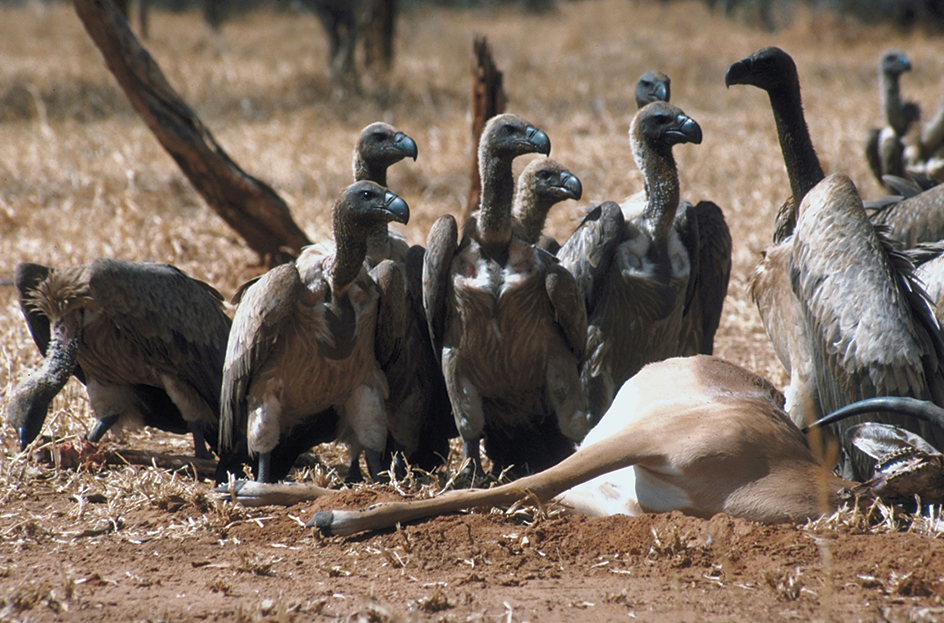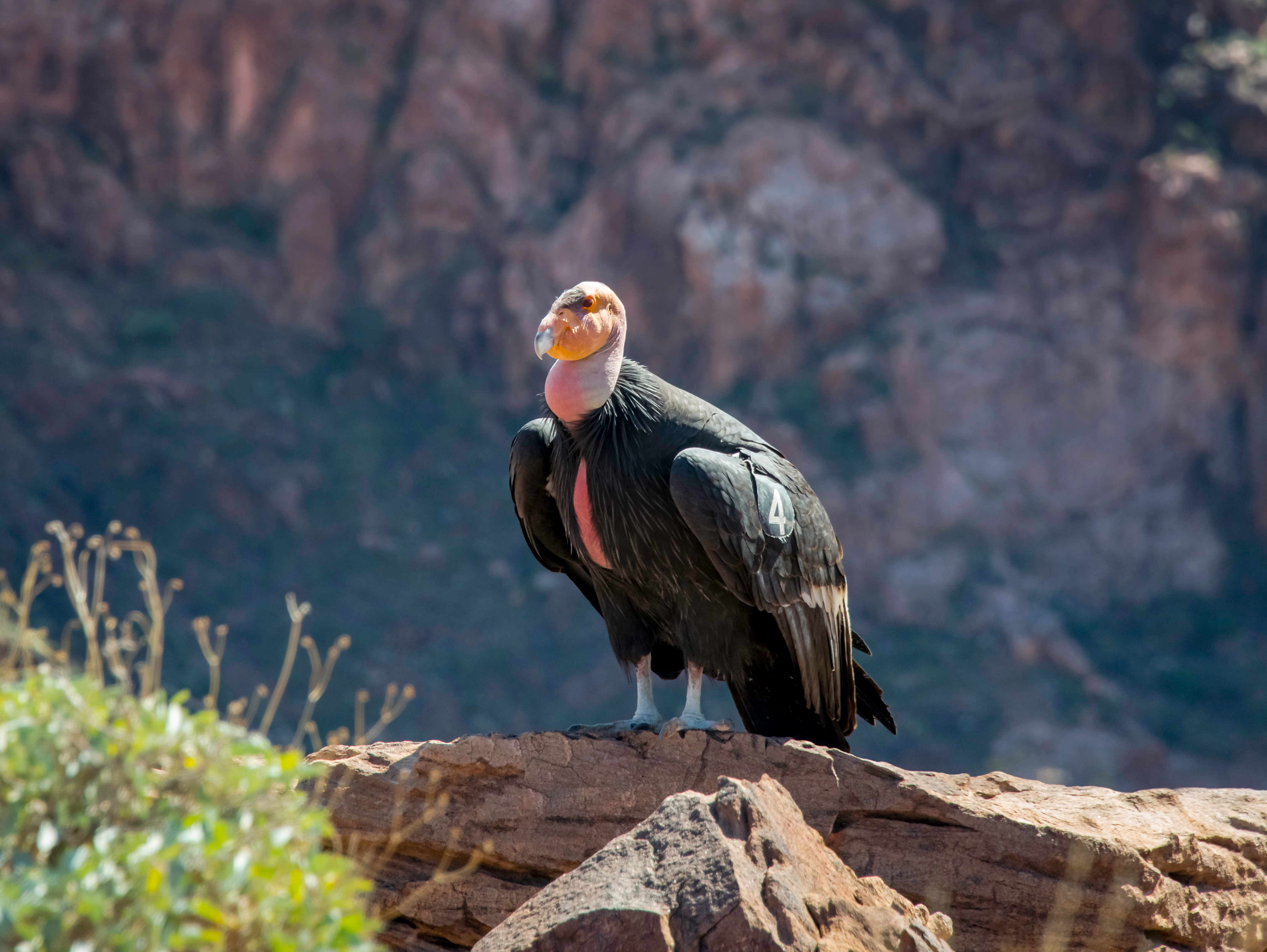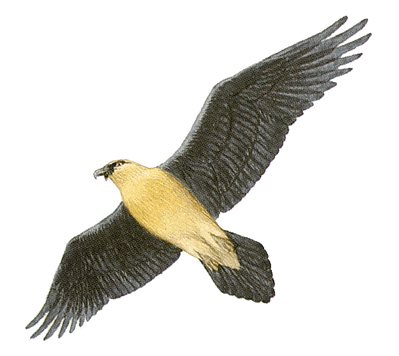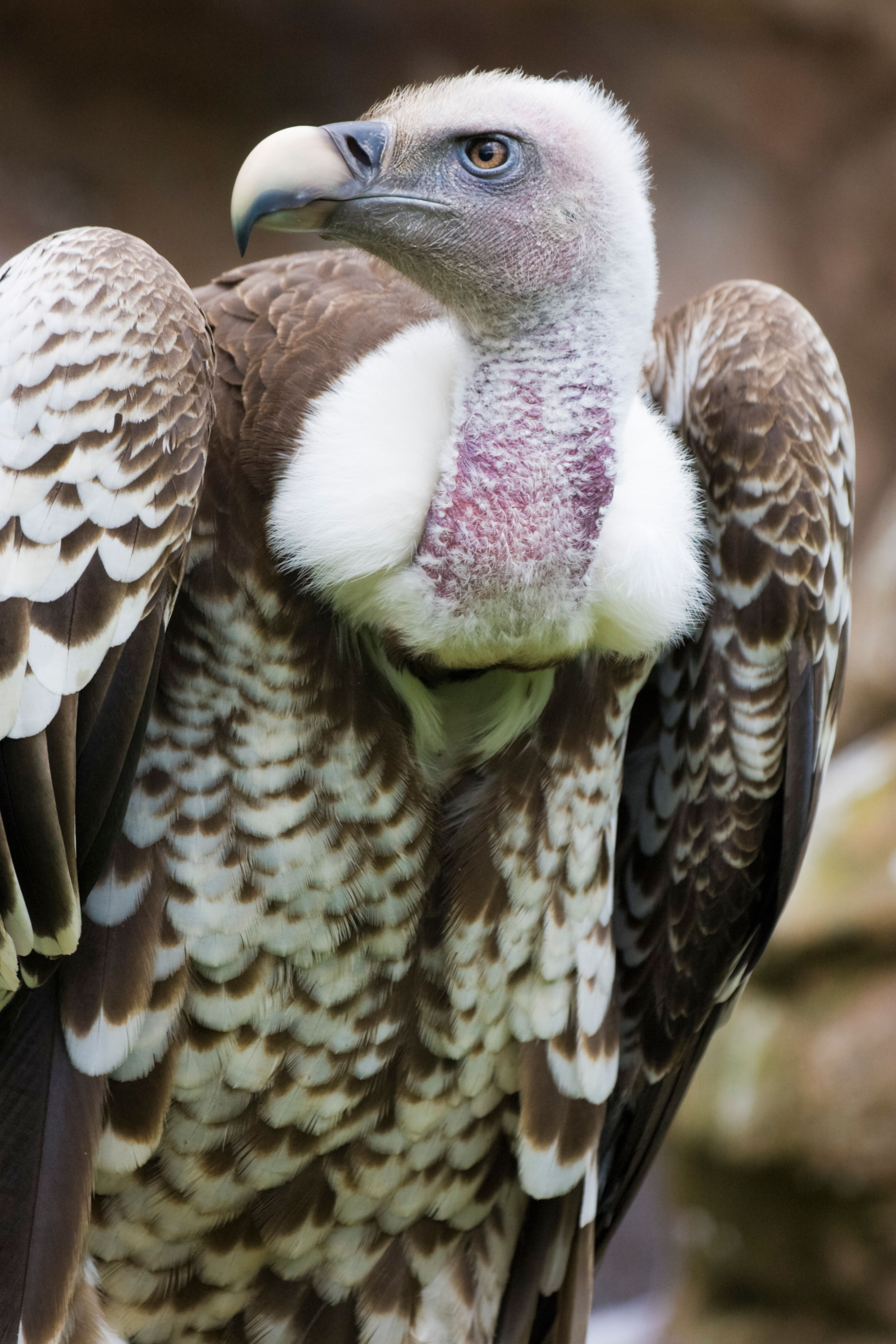Vulture is a name for various large birds of prey. Vultures feed chiefly on carrion (dead and decaying animal flesh). Most vultures have a bare head and neck. All have a slightly hooked beak. Most have weak feet. Their feathers are uniform in color. They may be brownish, black, or white. Vultures live on all continents except Australia and Antarctica, usually in open country. They have keen eyesight. They are excellent soaring birds.

Vultures tend to live in groups. During the breeding season, males pair off with females. The pairs nest on the ground under overhanging cliffs, in logs, and in caves. The female lays from one to three light-colored eggs. Both parents share in caring for the young.
There are two distantly related groups of vultures—New World vultures and Old World vultures. New World vultures are native to North and South America. Old World vultures are native to Europe, Asia, and Africa.
New World vultures
consist of several species (kinds). All New World vultures have a unique nostril hole in their beak. When the bird is viewed from the side, a person can see through its beak by looking into the nostril hole.

The black vulture is the most common North American vulture. It ranges from the southern United States to central Chile and Argentina. It measures about 24 inches (61 centimeters) long. The turkey vulture is found from southern Canada to Argentina. It has dark brown to olive-gray feathers. In some areas, black vultures, turkey vultures, and lesser yellow-headed vultures soar together in flocks of thousands of birds. These flocks resemble columns of smoke in the sky.
The king vulture is a striking bird. Its head is deeply furrowed and brilliantly colored. Its beak has fleshy growths of rich orange. This bird ranges from southern Mexico to northern Argentina. It grows to a length of about 27 inches (69 centimeters).

A New World vulture called the California condor is one of the most endangered birds. During the mid-1980’s, scientists captured all remaining wild California condors. Since then, some California condors have been bred in captivity and then released in California, Arizona, and Utah. The body of the California condor measures about 50 inches (127 centimeters) long. It has a wingspread of up to 9 1/2 feet (2.9 meters). Its relative, South America’s Andean condor, has a slightly larger wingspread. It is the world’s largest bird of prey. See Condor.

Old World vultures
consist of more than a dozen species. The largest is the cinereous vulture. It is also called the European black vulture. This bird lives chiefly in mountains of the Mediterranean region and central Asia, including the Himalaya. It grows to 39 inches (99 centimeters) long. Its wingspread reaches about 9 feet (2.7 meters). This species often drives off other vultures to feed on carrion.
The large, powerful lammergeier occurs in about the same range as the European black vulture. It is also called the bearded vulture because it has a “beard” of black bristles on its chin. Occasionally, it breaks bones by dropping them on rocks from high in the air. It then eats the exposed marrow.

The Egyptian vulture is found from Africa to India. It often eats ostrich eggs. It breaks the eggs by hurling small stones with its beak. The white-headed vulture and the palm nut vulture live in Africa south of the Sahara. The white-headed vulture sometimes hunts small antelope, lizards, and flamingos. The palm nut vulture feeds mainly on oil from the nuts of palm trees.

See also Buzzard.
